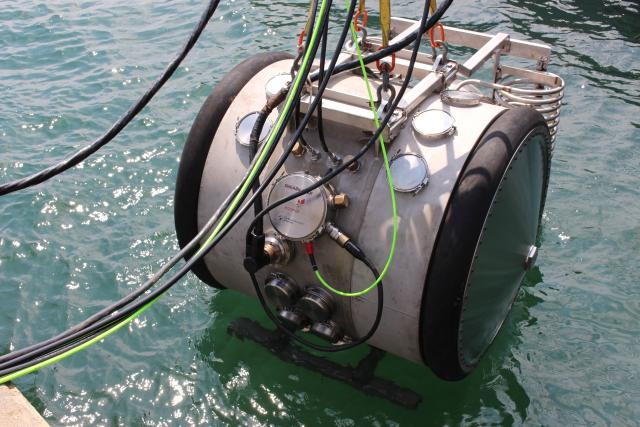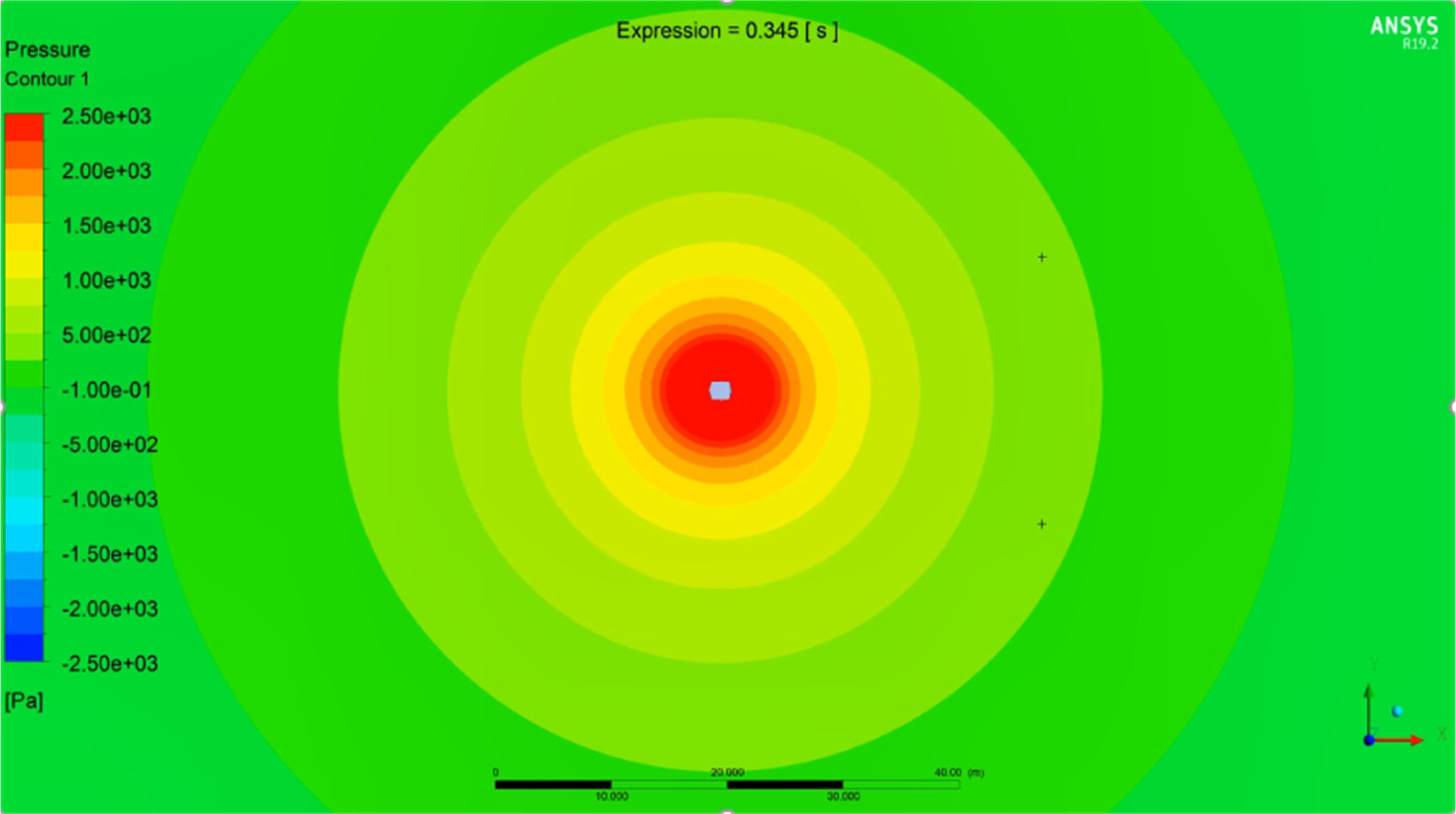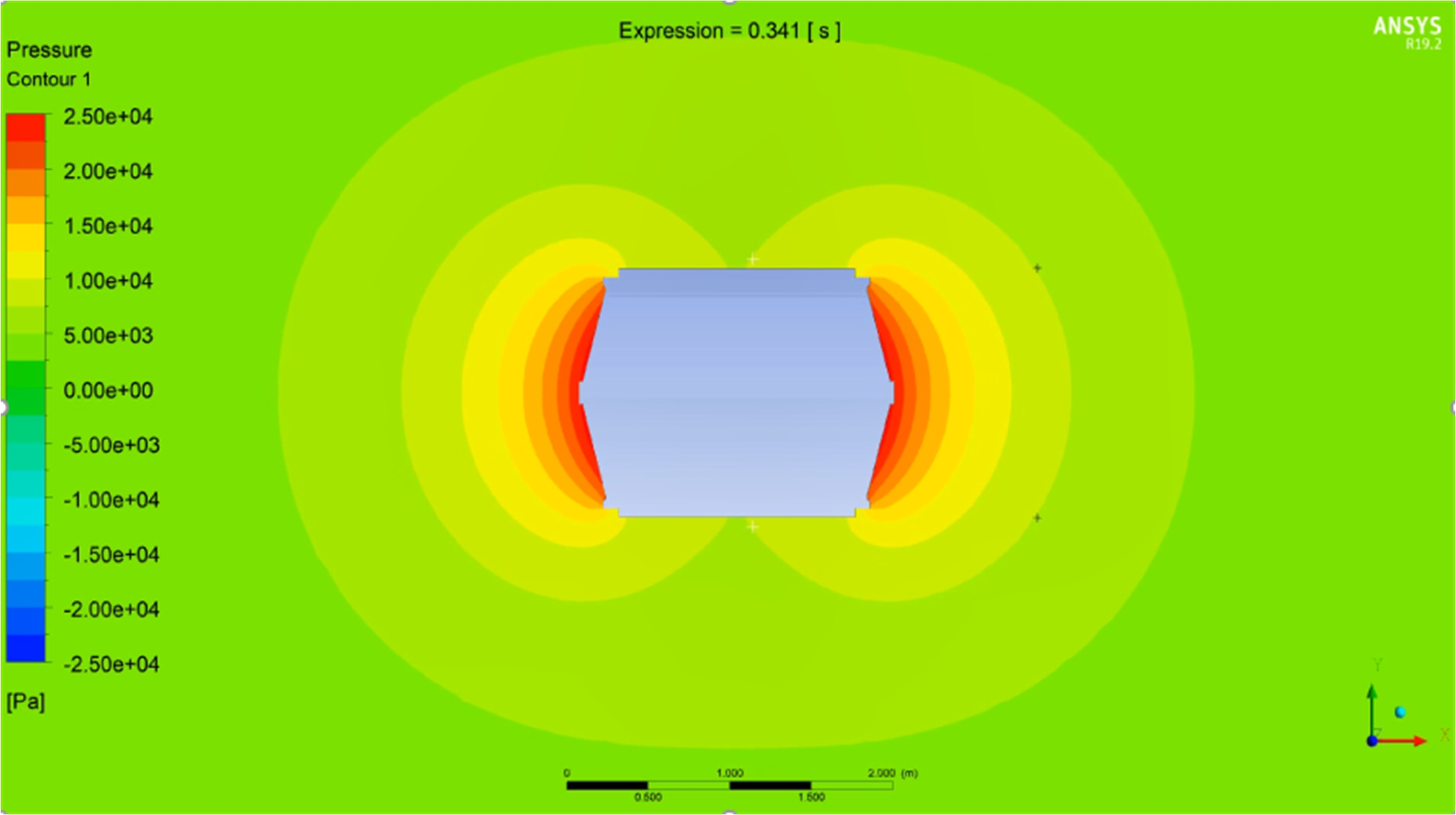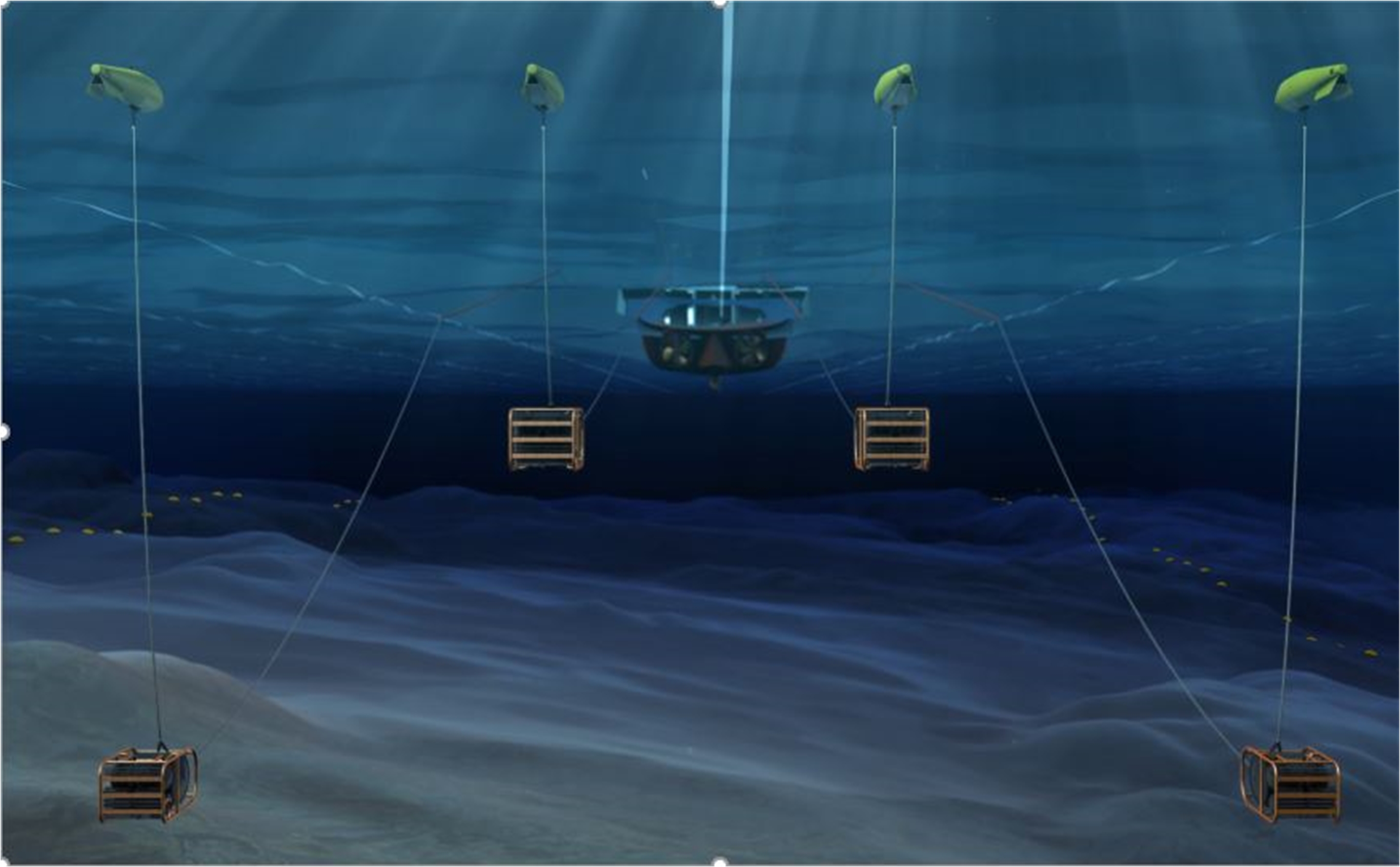
Shearwater’s marine vibrator BASS is lowered into the water for testing. (Source: Shearwater)
[Editor's note: A version of this story appears in the September 2020 edition of E&P Plus. Subscribe to the magazine here.]
Active seismic acquisition is one of the first key steps in the exploration for new oil and gas reserves and is also fundamental in the effort to optimize the development and production of existing oil fields. It uses seismic waves emitted by sources at discrete locations, and some of that energy is reflected back from layers in the subsurface to tens of thousands of recording sensors. The data are then processed to give an image of the subsurface, which is later analyzed by geologists to identify commercial deposits of hydrocarbons.
A typical marine seismic acquisition is conducted using airgun source arrays towed behind a vessel. Such a source typically comprises about 30 single airguns of different volumes, all firing at the same time to produce a sharp acoustic peak. The principle technology of airguns has not evolved much since the 1970s when it replaced the use of dynamite, and airguns stayed inherently inflexible by nature.
It is very challenging to shape the energy spectrum of an airgun source to suit a particular geological application, which means that in most cases the source ends up emitting more energy than what is required for seismic imaging as well as energy at higher frequencies than those used to form the final seismic image. The marine vibrator system has the capability to emit the same energy as an airgun source, but it distributed over time and over a precisely chosen frequency range. Therefore, it is considered less damaging and disturbing to marine fauna.


Environmental awareness
Increased environmental awareness and the resulting restrictions have motivated new efforts toward the development of marine vibrators as an alternative to airguns. Swept-frequency marine vibrators are one way to reduce levels of sound impact to the environment and to satisfy any restrictions. In the past, marine vibrators have been found to be deficient in energy output, especially at low frequencies. The achievable energy spectrum was found to roughly match the airgun energy spectrum at higher frequencies, but it failed to match it at low frequencies.
An alternative approach is to design the sweep to generate just enough energy at each frequency to create the required signal-to-noise ratio for imaging the target area in depth. Therefore, it is a necessity for any marine vibrator operation to not only avoid unused energy transmissions but to be able to move this excess energy to useful lower frequencies. Unlike airguns, vibrators allow the exact definition of which frequencies should be emitted for a specific geological setting and the survey target.
A main challenge that presents itself is achieving the required low frequency output with a practical and reliable marine vibrator. Sweeping at low frequencies requires a large volume of water displacement as the pressure output depends on the second derivative of the volume displacement. This leads to a roll-off in output as the driving frequency is reduced. An in-depth trade-off analysis shows that using a hydraulic-based drive technology enables the marine vibrator to reach low frequencies down to 3 Hz. Hydraulics can produce extremely high forces and enable fast actuation, while precisely controlling the phase and amplitude. Furthermore, hydraulics are reliable commercial components and are used widely in various industries such as aviation and robotics.
BASS system
To develop a commercially viable marine vibrator source, Shearwater has considered the Broadband Acoustic Seismic Source (BASS) system as a whole and designed it in a way that provides optimal functionality and interaction of all supporting subsystems that will handle, operate and maintain the projector modules. The projector modules are the units towed in the water, designed to be able to emit a specific waveform.
Shearwater has reduced the dimensions of a BASS projector module to about 2 m-by-2 m-by-3 m and its weight to about 5,000 kg. This makes it possible to handle multiple projectors on the back deck of a standard seismic vessel and tow them behind the vessel in a flexible source geometry based on the survey requirements. A small seismic source vessel will be able to tow up to eight BASS projector modules in parallel, reproducing the output of a standard airgun source and still have space for multiple replacement modules on board.

So far, only the ability to avoid emitting superfluous higher frequencies has been discussed here, but because the vibrator also sweeps the seismic energy over time, the sound pressure level (SPL) is significantly reduced, reducing the acoustic footprint from thousands of pops to something comparable to a constant whoosh next to a street. Additionally, one can also moderate the sound exposure level (SEL) at will, which is a measure of how much energy is sent out over a certain time duration. Frequency content, SPL and SEL are measures of environmental impact, and these can be customized precisely with the BASS.
Next to the environmental advantages of a marine vibrator, the precise control of the phase of the seismic signal provides the means to obtain a significant efficiency advantage compared to an airgun system.
By utilizing advanced processing techniques, combined with a smartly designed source geometry tailored to the survey area, the source productivity is expected to greatly increase. The main enabler of the productivity increase is the directivity of the BASS, making it possible to unlock gradient-source processing capabilities as shown in the case of ocean-bottom nodes (OBN).
Full-azimuth OBN surveys are considered to be the gold standard in terms of image quality and the ability to accurately characterize reservoir properties. Despite their superior quality, less than 40% of all seismic acquisitions are on the ocean bottom, mainly due to cost. One reason for the high cost of seabed acquisition results from the long acquisition times in the field, and consequently the vessel costs. Modeling shows that the BASS marine vibrator system can potentially reduce the acquisition time and the overall survey cost.
The BASS marine vibrator system will enable global E&P companies to operate with lower impact to the environment, which may be particularly important in areas with busy or narrow acquisition windows due to other marine activities, such as commercial fishing. Marine vibrators are a potential game changer because they address three important objectives: more efficiency, less environmental impact and better data.
Recommended Reading
Hess Midstream Announces 10 Million Share Secondary Offering
2024-02-07 - Global Infrastructure Partners, a Hess Midstream affiliate, will act as the selling shareholder and Hess Midstream will not receive proceeds from the public offering of shares.
EQT CEO: Biden's LNG Pause Mirrors Midstream ‘Playbook’ of Delay, Doubt
2024-02-06 - At a Congressional hearing, EQT CEO Toby Rice blasted the Biden administration and said the same tactics used to stifle pipeline construction—by introducing delays and uncertainty—appear to be behind President Joe Biden’s pause on LNG terminal permitting.
Venture Global Acquires Nine LNG-powered Vessels
2024-03-18 - Venture Global plans to deliver the vessels, which are currently under construction in South Korea, starting later this year.
Imperial Oil Shuts Down Fuel Pipeline in Central Canada
2024-03-18 - Supplies on the Winnipeg regional line will be rerouted for three months.
Hess Midstream Subsidiary to Buy Back $100MM of Class B Units
2024-03-13 - Hess Midstream subsidiary Hess Midstream Operations will repurchase approximately 2 million Class B units equal to 1.2% of the company.





